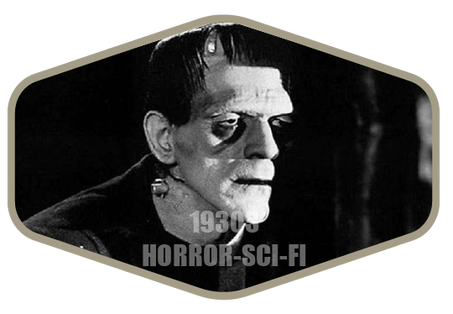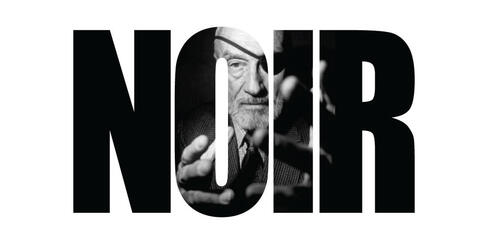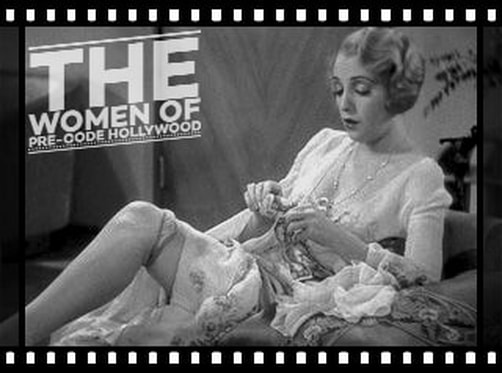With the advent of sound, horror and sci-fi films took on a new dimension in the 1930s. Aside from the benefit of audible dialogue, sound effects added an extra element of terror and suspense. The ubiquitous creaking doors, thunderclaps, suspenseful music and destressed damsel screams all added a sense of realism heretofore unavailable in cinema – a far cry from the title cards and dramatic pantomiming that was commonplace in the silent films of the previous decade.
This golden age of horror cinema brought us the likes of Frankenstein, Dracula, The Mummy and the Invisible Man among others. These timeless characters would go on to haunt us in countless sequels and remakes for years to come. The most prolific actors of this genre included: Bela Lugosi, Boris Karloff, Lionel Barrymore, and Lionel Atwill.
This golden age of horror cinema brought us the likes of Frankenstein, Dracula, The Mummy and the Invisible Man among others. These timeless characters would go on to haunt us in countless sequels and remakes for years to come. The most prolific actors of this genre included: Bela Lugosi, Boris Karloff, Lionel Barrymore, and Lionel Atwill.
HORROR-SCIFI FILMS OF THE 1930s
 BAT WHISPERS, THE (1930)
BAT WHISPERS, THE (1930) (82 Min.) Genre: 1930 HORROR-SCIFI, Transfer Quality: B
Magnificently restored by UCLA to its original "Grandeur" wide-screen format The Bat Whispers may not be a cinematic masterpiece but is certainly worth a second look. Opening with a series of flamboyant tracking shots, director Roland West soon enough settles down to the usual "Old House" shenanigans of sliding panels, mysterious bumps in the night, crawling hands, thunder and lightning (sounding more like an earthquake, incidentally, than a storm), etc. An official remake of the 1926 The Bat (which was itself based on an Avery Hopwood play), The Bat Whispers owed just as much to The Cat and the Canary (1927), the true grand-daddy of all haunted house mysteries. After taunting the New York City police a final time, the notorious criminal "The Bat" announces his retirement to the country. Meanwhile, in said country wealthy spinster Cornelia Van Gorder (Grayce Hampton is leasing the Courtleigh Fleming estate. The news of "The Bat" and the simultaneous disappearance of cashier Brooks Bailey (William Bakewell) shortly after a robbery at the Fleming bank set in motion a series of troubling events — troubling especially for Miss Van Gorder's eternally frightened maid Lizzie (Maude Eburne). The missing Brooks Bailey shows up soon enough courtesy of Van Gorder's pretty niece Dale (Una Merkel), who persuades the young man to impersonate a gardener — a disguise that fools no one. There is a mysterious doctor who speaks with an accent (Gustav von Seyffertitz); an equally alarming caretaker (Spencer Charters),; a piece of missing blueprint that leads to a secret room; and, of course, "The Bat," who appears to be prowling the estate as well. Enter into all this Detective Anderson (Chester Morris), who in his unique gritty way gets to the bottom of things.
Starring: Chester Morris, Spencer Charters, Una Merkel, William Bakewell | Directed by: Roland West
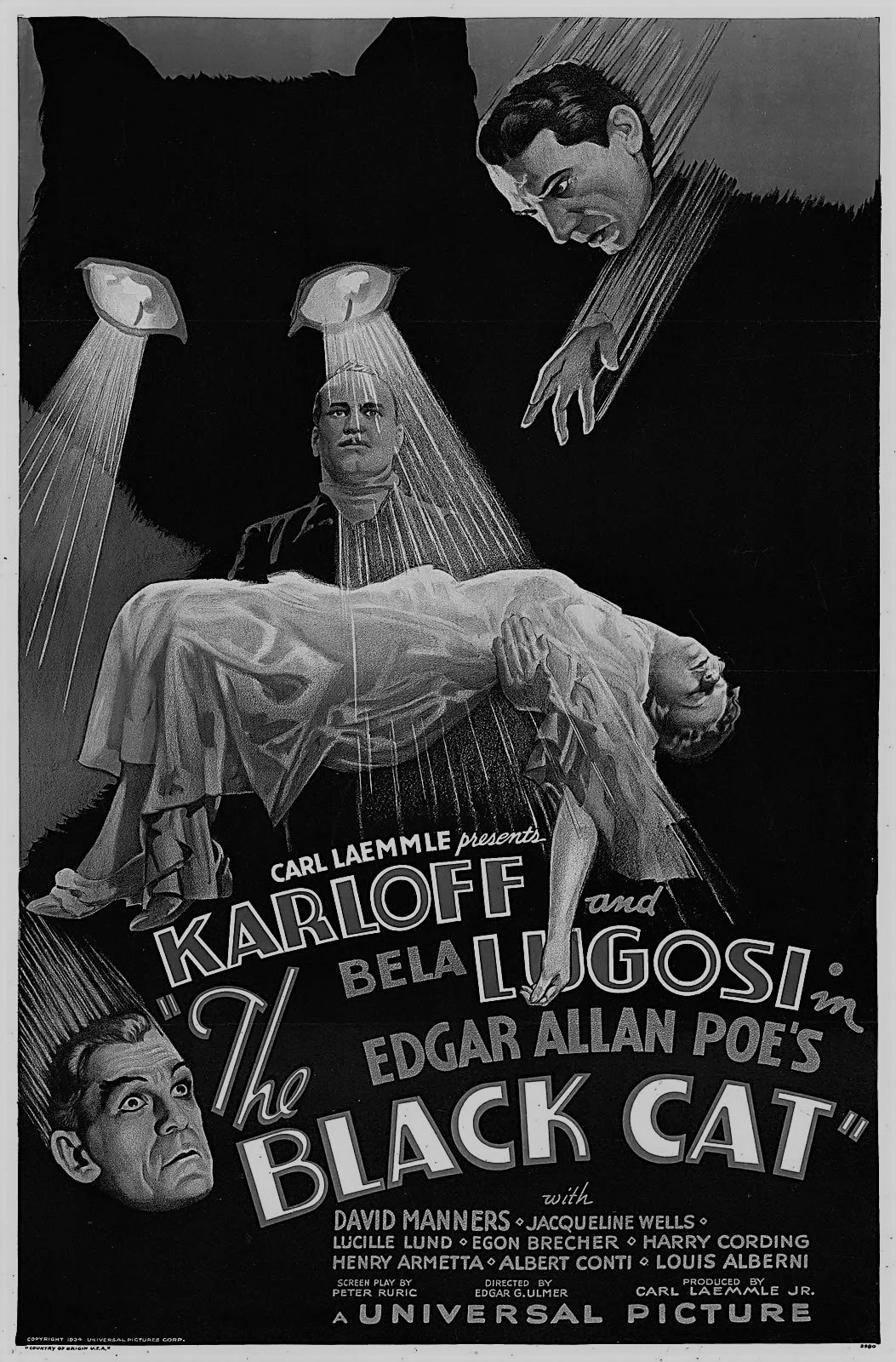 BLACK CAT, THE (1934)
BLACK CAT, THE (1934) (65 Min.) Genre: 1930 HORROR-SCIFI, Transfer Quality: A
The first cinematic teaming of horror greats Boris Karloff and Bela Lugosi is a bizarre, haunting, and relentlessly eerie film that was surprisingly morbid and perverse for its time. Peter (David Manners) and Joan Allison (Julie Bishop) are honeymooning in Budapest when they meet mysterious scientist Dr. Vitus Verdegast (Lugosi) aboard a train. When the trio's bus from the train station gets into an accident, the young couple accompanies Verdegast to the castle of the spectral Hjalmar Poelzig (Karloff), an architect and the leader of a Satanic cult. Poelzig's treachery in World War I caused the deaths of thousands of his and Verdegast's countrymen, as well as Verdegast's own internment as a prisoner of war. While Verdegast was detained, Poelzig married first his wife, who later died, then his daughter. Now Verdegast has come back for retribution, and the honeymooners are trapped in the two men's horrifying battle of wits. Corpses preserved in glass cases, frightening Satanic rituals, and a climactic confrontation in which one of the characters is skinned alive add to the film's pervasive sense of evil and doom, along with the stark black-and-white photography by John Mescall that makes Poelzig's futuristic mountaintop mansion even more disturbing. Karloff and Lugosi are both excellent, with Lugosi doing a rare turn as a good guy, albeit one who has gone off the rails. Having little to do with the Edgar Allan Poe story of the same name, The Black Cat has grown in stature over the years and is now widely regarded as the masterpiece of director Edgar G. Ulmer and one of the finest horror films ever made. — Don Kaye
Starring: Boris Karloff, Bela Lugosi, David Manners, Jacqueline Wells (Julie Bishop), Claire Dodd | Directed by: Edgar G. Ulmer
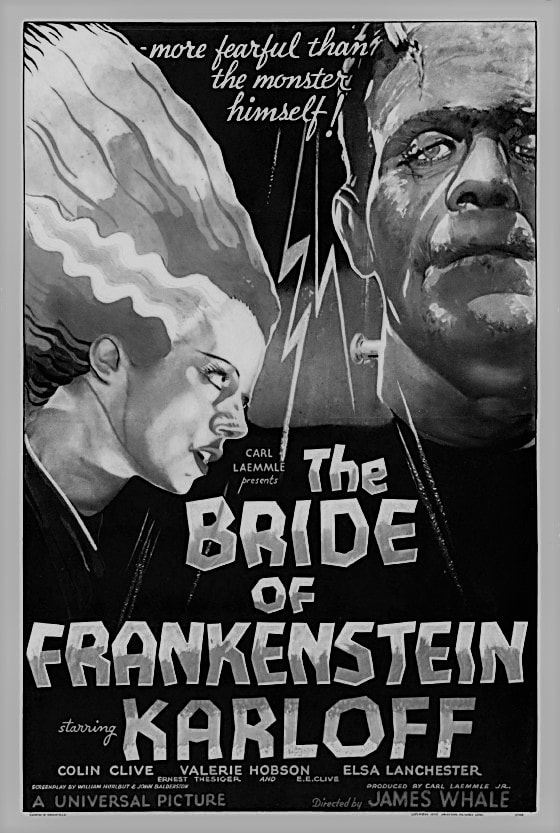 BRIDE OF FRANKENSTEIN (1935)
BRIDE OF FRANKENSTEIN (1935) (75 Min.) Genre: 1930 HORROR-SCIFI, Transfer Quality: A
Probably the most delightful monster movie ever made, though it has it's share of real feeling too. The elegantly wicked Dr. Praetorious enlists the monster's aid to force Dr. Frankenstein to build a women. Indescribably stylish, witty, and groteque; nothing remotely like it has been made since.
Starring: Boris Karloff, Colin Clive, Valerie Hobson, Elsa Lanchester, Ernst Thesiger, Walter Brennan, John Carradine | Directed by: James Whale
 CHANDU THE MAGICIAN (1932)
CHANDU THE MAGICIAN (1932) (70 Min.) Genre: 1930 HORROR-SCIFI, Transfer Quality: A
Based on the radio serial of the same name, Chandu the Magician is a veritable rollercoaster ride of thrills and terror, boasting some of the best special effects of its period. Edmund Lowe stars as suave Frank Chandler, better known to his enemies as Chandu the Magician. Though he tries to keep his supernatural powers a secret from his beloved sister Dorothy (Virginia Hammond), niece Betty Lou (June Vlasek, aka June Lang) and nephew Bobby (Nestor Aber), Chandu's hand is forced by megalomaniacal villain Roxor (Bela Lugosi at his ripest). Holding Dorothy's scientist husband Robert Regent (H. B. Walthall) captive, Roxor hopes to force Regent to reveal the secret of his death ray (created, of course, "for the good of mankind") by kidnapping the scientist's wife and kids. Chandu manages to remain one step ahead of Roxor, performing all manner of miraculous magical feats to confound his enemy, but even our hero temporarily falls victim to the villain's machinations when Roxor abducts Chandu's sweetheart, Princess Nadji (Irene Ware). The production-design expertise of co-director William Cameron Menzies is never so obvious than when Chandu and his friends are subjected to the various serial-like perils imposed upon them by Roxor; some of these cliffhangers would seem to have been the inspiration for similar situations in Steven Spielberg's Raiders of the Lost Ark. Counterpointing the excitement is the comedy relief of Herbert Mundin, cast as a bibulous valet who is bedeviled by a remonstrative, pint-sized "alter ego." Two years after Chandu the Magician, the film's villain, Bela Lugosi, was offered the rare opportunity to play the heroic Frank Chandler himself in the exhilarating 12-part serial The Return of Chandu.
Starring: Edmond Lowe, Irene Ware, Bela Lugosi, Herbert Mundin | Directed by: William Cameron Menzies
 CONDEMNED TO LIVE (1935)
CONDEMNED TO LIVE (1935) (68 Min.) Genre: 1930 HORROR-SCIFI, Transfer Quality: B
In Condemned to Live, Ralph Morgan stars as Professor Paul Kriston, the kindly and generous doctor of a tiny European village. So well-liked is Kriston that the beautiful Marguerite Mane (Maxine Doyle) is willing to marry him, even though she loves another man, young David (Russell Gleason). Things take a sinister turn when a series of murders occur in the village, apparently committed by a vampiric beast. David makes himself quite unpopular when he suggests that the killer may be a human being. Meanwhile, Professor Kriston turns to an old family friend, Dr. Anders Bizet (Pedro de Cordoba), for a possible solution to the murder spree, but Bizet is strangely secretive. Condemned to Live was filmed on standing sets at Universal City and on location at Bronson Canyon.
Starring: Ralph Morgan, Maxine Doyle, Russell Gleason, Pedro de Cordoba | Directed by: Frank Strayer
 CRIME OF DR. CRESPI, THE (1935)
CRIME OF DR. CRESPI, THE (1935) (64 Min.) Genre: 1930 HORROR-SCIFI, Transfer Quality: C
One of several Liberty productions picked up for release by Republic, The Crime of Dr. Crespi is a modern-dress adaptation of Edgar Allen Poe's The Premature Burial. Erich Von Stroheim stars as brilliant surgeon Dr. Anton Crespi, who seeks revenge against Ross (John Bohn), the man who stole his sweetheart away. When Ross is brought into the hospital E.R. for a crucial operation, Crespi is handed a golden opportunity to get even. Ross seemingly dies on the operating table, but in fact Crespi has administered a powerful drug that places his old enemy in a deathlike trance. Fully conscious and aware of what is happening, Ross is buried alive, but not before Crespi has some fun taunting his helpless victim. Meanwhile, Crespi's associate Dr. Arnold suspects that something is amiss, and with the help of Dr. Thomas (Dwight "Renfield" Frye in a rare non-lunatic role) he exhumes Ross to perform an autopsy. The "corpse" quickly revives?and then??AAAAAH!!!!
Starring: Erich Von Stroheim, Dwight Frye, Paul Guilfoyle, John Bohn, Jean Brooks | Directed by: John H. Auer
 DEVIL DOLL, THE (1936)
DEVIL DOLL, THE (1936) (80 Min.) Genre: 1930 HORROR-SCIFI, Transfer Quality: A
Falsely convicted Lionel Barrymore escapes from Devil's Island with fellow prisoner H.B. Walthall. A brilliant scientist, Walthall reveals to Barrymore that he has developed a process to shrink human beings. Upon Walthall's death, Barrymore makes his way back to the old scientist's lab, intending to use Walthall's formula to exact vengeance on those who have wronged him. He does so, clearing his name and securing the future happiness of his daughter Maureen O'Sullivan (who believes that Barrymore is dead) in the process. But Barrymore's crazed assistant Rafaela Ottiano isn't satisfied. "We'll make the whole world small!" she hisses, forcing Barrymore to kill her and destroy the formula. To save his daughter from scandal, Barrymore disappears into the night, the implication being that he plans to commit suicide at the first opportunity. The excellent miniature work in The Devil Doll (much of it accomplished with outsized sets, a la the Laurel and Hardy comedy Brats) successfully takes the viewers' minds off the rather silly plot. Director Tod Browning was always stronger with atmosphere than with plot and dialogue, and this film is no exception. Far less logical than the miniaturization process is Barrymore's decision to disguise himself as an old woman, since this transparent guise wouldn't convince a 2-year-old in real life. Based on the novel Burn, Witch, Burn by Abraham Merritt, The Devil Doll was scripted by several hands, including Erich Von Stroheim. — Hal Erickson
Starring: Lionel Barrymore, Maureen O'Sullivan, Frank Lawton, Robert Greig, Erich Von Stroheim | Directed by: Tod Browning
 DOCTOR X (1932)
DOCTOR X (1932) (77 Min.) Genre: 1930 HORROR-SCIFI, Transfer Quality: A
Fay Wray screams when she first lays eyes on Lionel Atwill in Doctor X, but don't let that fool you. Atwill plays Fay's father this time around, and he may very well not be the diabolical "Moon Murderer" whom the police are seeking. Dr. Xavier (Atwill) maintains a research lab in a remote Long Island estate. The police suspect that one of Xavier's assistants—all "second-chancers" whose previous misdemeanors range from botched experiments to cannibalism!—is the mysterious murderer who strikes only when the moon is full. Newspaper reporter Lee Tracy sneaks into the estate to get a swell scoop, whereupon he falls in love with Fay. In trying to help the authorities, Xavier stages an elaborate trap for the Moon Murderer, with his daughter as the willing bait. The killer (we won't tell you who it is, but you'll figure it out anyway) reveals himself by coating his body with "synthetic flesh", which gives him supernatural powers. Based on a play by Howard C. Comstock and Allen C. Miner, Doctor X was originally filmed in two-color Technicolor; available for years only in black and white, the film was restored to its full tinted state in the 1970s. — Hal Erickson
Starring: Lionel Atwill, Lee Tracy, Fay Wray, Preston S. Foster | Directed by: Michael Curtiz
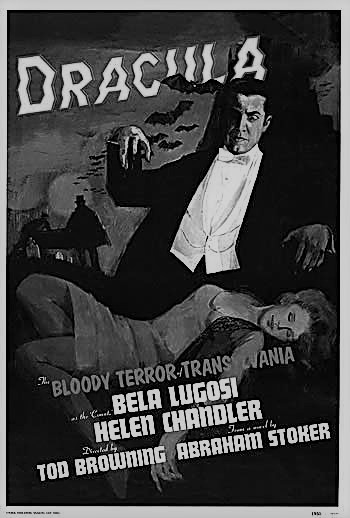 DRACULA (1931)
DRACULA (1931) (75 Min.) Genre: 1930 HORROR-SCIFI, Transfer Quality: A
I am....Drac-u-la. I bid you velcome. Thus does Bela Lugosi declare his presence in the 1931 screen version of Bram Stoker's Dracula. Director Tod Browning invests most of his mood and atmosphere in the first two reels, which were based on the original Stoker novel; the rest of the film is a more stagebound translation of the popular stage play by John Balderston and Hamilton Deane. Even so, the electric tension between the elegant Dracula and the vampire hunter Professor Van Helsing (Edward Van Sloan) works as well on the screen as it did on the stage. And it's hard to forget such moments as the lustful gleam in the eyes of Mina Harker (Helen Chandler) as she succumbs to the will of Dracula, or the omnipresent insane giggle of the fly-eating Renfield (Dwight Frye). Despite the static nature of the final scenes, Dracula is a classic among horror films, with Bela Lugosi giving the performance of a lifetime as the erudite Count (both Lugosi and co-star Frye would forever after be typecast as a result of this film, which had unfortunate consequences for both men's careers). Compare this Dracula to the simultaneously filmed Spanish-language version, which makes up for the absence of Lugosi with a stronger sense of visual dynamics in the lengthy dialogue sequences. In 1999, a special rerelease of Dracula was prepared featuring a new musical score written by Philip Glass and performed by The Kronos Quartet. — Hal Erickson
Starring: Bela Lugosi, Helen Chandler, David Manners, Dwight Frye, Edward Van Sloan | Directed by: Tod Browning
 DRACULA'S DAUGHTER (1936)
DRACULA'S DAUGHTER (1936) (71 Min.) Genre: 1930 HORROR-SCIFI, Transfer Quality: A
It may be sacrilege to say so, but Dracula's Daughter is an immense improvement over the original 1931 Dracula, despite the absence of Bela Lugosi in the cast. Gloria Holden is first-rate as the title character, alias "Countess Marya Zaleska," who after stealing her father's body from the authorities with the help of her faithful hunchbacked assistant Sandor (Irving Pichel), sets fire to the corpse in hopes of obliterating the family curse of vampirism. Try as she might, though, the "Countess" is unable to resist the temptation to go for the jugular vein; in one of the kinkier plot developments, she seems to favor the blood of female victims. Lest anyone read anything into this, however, it is established that she is hopelessly in love with handsome scientist Jeffrey Garth (Otto Kruger), and by film's end she has kidnapped Garth's sweetheart Janet Blake (Marguerite Churchill), hoping to lure him to Transylvania where he will be forced to become her mate throughout Eternity. Edward Van Sloan returns in his Dracula role as tireless vampire hunter Van Helsing, who once again comes to the rescue with a generous supply of garlic necklaces, crucifixes and wooden stakes. Full of clever and often surprising little touches (few other films of the mid-1930s would kill off a comedy-relief character in the second reel!), Dracula's Daughter is among the best of the vintage Universal horror films.
Starring: Gloria Holden, Otto Kruger, Marguerite Churchill, Irving Pichel, Edward Van Sloan, Hedda Hopper | Directed by: Lambert Hillyer
 FRANKENSTEIN (1931)
FRANKENSTEIN (1931) (71 Min.) Genre: 1930 HORROR-SCIFI, Transfer Quality: A
Still regarded as the definitive film version of Mary Shelley's classic tale of tragedy and horror, Frankenstein made unknown character actor Boris Karloff a star and created a new icon of terror. Along with the highly successful Dracula, released earlier the same year, it launched Universal Studio's golden age of 1930s horror movies. The film's greatness stems less from its script than from the stark but moody atmosphere created by director James Whale; Herman Rosse's memorable set designs, particularly the fantastic watchtower laboratory, featuring electrical equipment designed by Kenneth Strickfaden; the creature's trademark look from makeup artist Jack Pierce, who required Karloff to don pounds of make-up and heavy asphalt shoes to create the monster's unique lurching gait; and Karloff's nuanced performance as the tormented and bewildered creature. Frankenstein was greeted with screams, moans, and fainting spells upon its initial release, obliging Universal to add a disclaimer in which Edward van Sloan advises the faint of heart to leave the theater immediately. If they don't: "Well...we've warned you." Director James Whale was memorably embodied by Ian McKellen in the Oscar-winning 1998 biopic Gods and Monsters. — Hal Erickson
Starring: Colin Clive, Boris Karloff, Mae Clarke, John Boles, Edward Van Sloan, Lionel Belmore | Directed by: James Whale
 GHOUL, THE (1933)
GHOUL, THE (1933) (80 Min.) Genre: 1930 HORROR-SCIFI, Transfer Quality: A
The Ghoul was Boris Karloff's first British horror film. Karloff is cast as Egyptologist Professor Morant, who on his deathbed insists that he be buried with a rare jewel that was once part of an Oriental idol. It is Morant's belief that the gem will one day restore him to life, a contingency which terrifies the Professor's weaselly assistant Laing (Ernst Thesiger), who hopes to get his mitts on the jewel himself. In due time, Morant dies and is buried — minus the jewel, which has seemingly disappeared from the face of the earth. All of this leads to a spooky denouement in Morant's cemetery crypt, designed in the manner of the ancient Egyptians. The romantic subplot is handled by Anthony Bushell as Morlant's nephew Ralph and Dorothy Hyson as Betty, while comedy relief is ladled on by Kathleen Harrison (Kaney) as a man-chasing spinster. Long believed lost (all prints were supposed to have been destroyed when the film was remade as the 1962 horror comedy No Place Like Homicide), The Ghoul resurfaced in Europe in the early 1970s. — Hal Erickson
Starring: Boris Karloff, Cedric Hardwicke, Ernst Thesiger, Dorothy Hyson | Directed by: T. Hayes Hunter
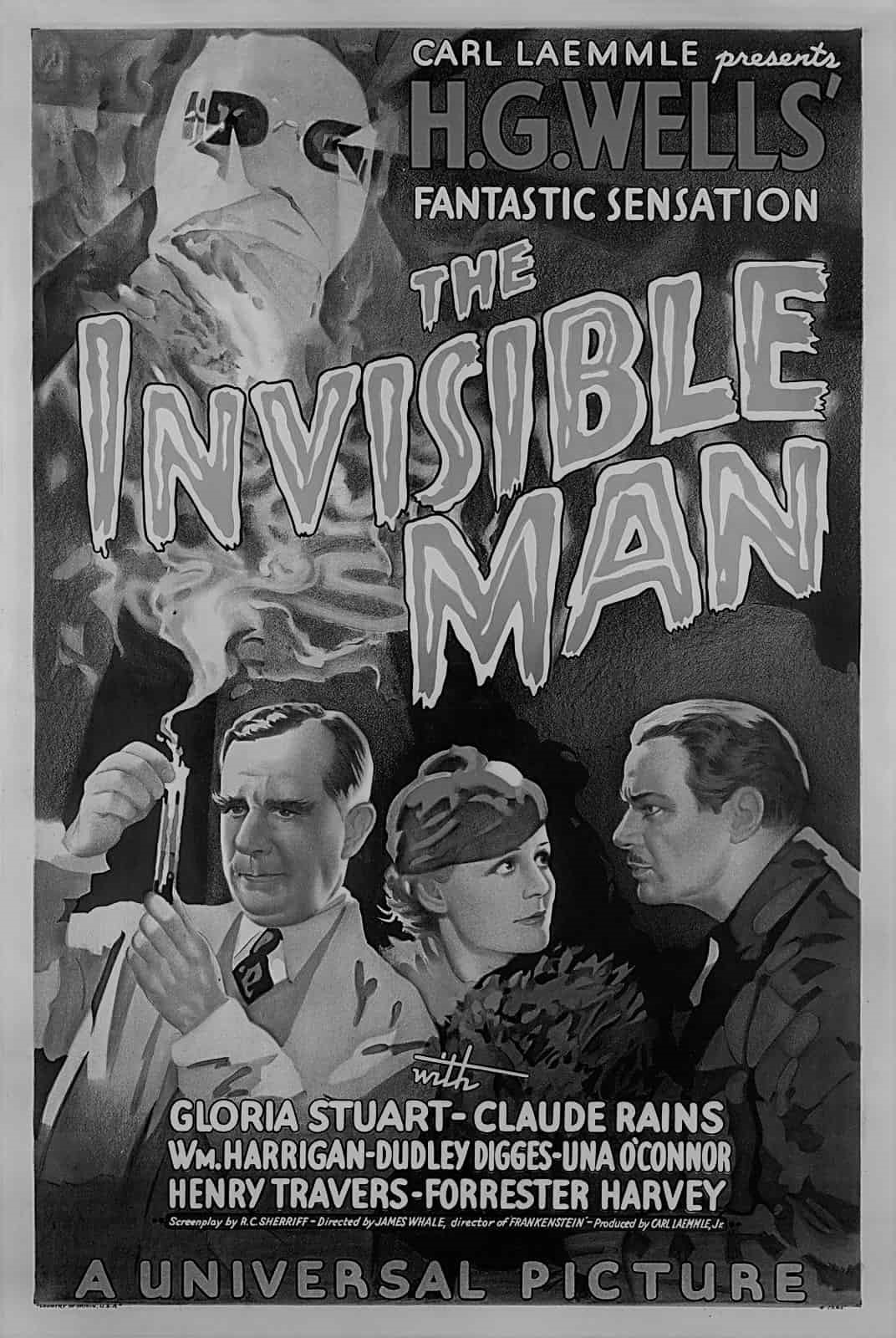 INVISIBLE MAN, THE (1933)
INVISIBLE MAN, THE (1933) (71 Min.) Genre: 1930 HORROR-SCIFI, Transfer Quality: A
A mysterious stranger, his face swathed in bandages and his eyes obscured by dark spectacles, has taken a room at a cozy inn in the British village of Ipping. Never leaving his quarters, the stranger demands that the staff leave him completely alone. Working unmolested with his test tubes, the stranger does not notice when the landlady inadvertently walks into his room one morning. But she notices that her guest seemingly has no head! The stranger, one Jack Griffin, is a scientist, who'd left Ipping several months earlier while conducting a series of tests with a strange new drug called monocane. He returns to the laboratory of his mentor, Dr. Cranley (Henry Travers), where he reveals his secret to onetime partner Dr. Kemp (William Harrigan) and former fiancee Flora Cranley (Gloria Stuart). Monocane is a formula for invisibility, and has rendered Griffin's entire body undetectable to the human eye. Alas, monocane has also had the side effect of driving Griffin insane. With megalomanic glee, Griffin takes Kemp into his confidence, explaining how he plans to prove his superiority over other humans by wreaking as much havoc as possible. At first, his pranks are harmless; then, without batting an eyelash, he turns to murder, beginning with the strangling of a comic-relief constable. When Kemp tries to turn Griffin over to the police, he himself is marked for death. Despite elaborate measures taken by the police, Griffin is able to murder Kemp, considerately taking the time to describe his homicidal methods to his helpless victim. After a reign of terror costing hundreds of lives, Griffin is cornered in a barn, his movements betrayed by his footsteps in the snow. Mortally wounded by police bullets, Griffin is taken to a hospital, where he regretfully tells Flora that he's paying the price for meddling into Things Men Should Not Know. As Griffin dies, his face becomes slowly visible: first the skull, then the nerve endings, then layer upon layer of raw flesh, until he is revealed to be Claude Rains, making his first American film appearance. So forceful was Rains' verbal performance as "The Invisible One" that he became an overnight movie star (after nearly twenty years on stage). Wittily scripted by R.C. Sherriff and an uncredited Philip Wylie, and brilliantly directed by James Whale, The Invisible Man is a near-untoppable combination of horror and humor. Also deserving of unqualified praise are the thorouhgly convincing special effects by John P. Fulton and John Mescall. With the exception of The Invisible Man Returns, none of the sequels came anywhere close to the quality of the 1933 original. Trivia alert: watch for Dwight "Renfield" Frye as a bespectacled reporter, Walter Brennan as the man whose bicycle was stolen, and John Carradine as the fellow in the phone booth who's "gawt a plan to ketch the h'invisible man."
Starring: Claude Rains, Gloria Stuart, Henry Travers, William Harrigan, Una O'Connor | Directed by: James Whale
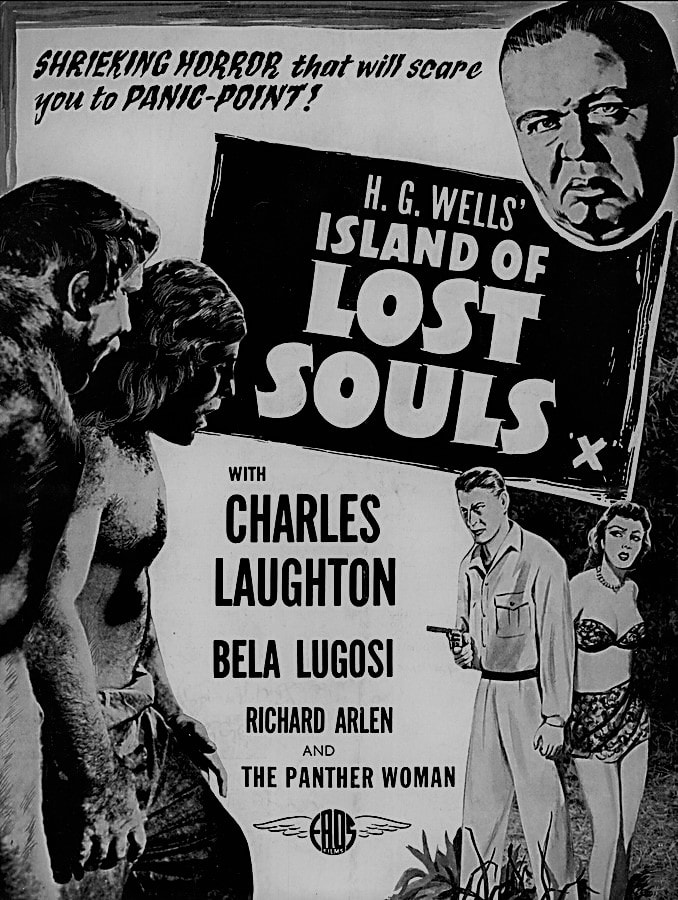 ISLAND OF LOST SOULS (1932)
ISLAND OF LOST SOULS (1932) (71 Min.) Genre: 1930 HORROR-SCIFI, Transfer Quality: A
This first film version of H.G. Wells' Island of Dr. Moreau stars Charles Laughton as Dr.Moreau, a dedicated but sadly misguided scientist who rules the roost on a remote island. Shipwrecked sailor Edward Parker Richard Arlen finds himself on Moreau's island, agreeing to stick around until another boat can come along and take him home. But that's not quite what Moreau has in mind: he'd rather Parker stay on the island and marry the exotic Lota (Kathleen Burke), who curiously possesses the characteristics of the panther. In fact, all the island's natives seem more animal than human, especially the hirsute Bela Lugosi. And why not? They are animals who've been transformed by Moreau into humanlike creatures via surgery. Moreau's plans to mate Parker and Lota are complicated by the arrival of Parker's fiancee Leila Hyams, who has been brought to the island by ship's captain Stanley Fields, one of Moreau's flunkies. When Moreau kills Fields for this insubordination, he makes the mistake of breaking one of the rules he himself has imposed on the island: That no creature shall kill another. Island of Lost Souls does its job of inducing goosebumps so well that one can forgive the cherubic excesses of Charles Laughton in his portrayal of Dr. Moreau. The film would be remade under Wells' original title in 1978, with Burt Lancaster in the Laughton role.
Starring: Charles Laughton, Bela Lugosi, Richard Arlen, Leila Hyams, Alan Ladd | Directed by: Erle C. Kenton
 KING KONG (1933)
KING KONG (1933) (100 Min.) Genre: 1930 HORROR-SCIFI, Transfer Quality: A
How would you like to star opposite the tallest, darkest leading man in Hollywood? Enticed by these words, brunette leading lady Fay Wray dyed her hair blonde and accepted the role of Ann Darrow in King Kong — and stayed with the project even after learning that her "leading man" was a 50-foot ape. The film introduces us to flamboyant, foolhardy documentary filmmaker Carl Denham (Robert Armstrong), who sails off to parts unknown to film his latest epic with leading lady Darrow in tow. Disembarking at Skull Island, they stumble on a ceremony in which the native dancers circle around a terrified-looking young girl, chanting, "Kong! Kong!" The chief (Noble Johnson) and witch doctor (Steve Clemente) spot Denham and company and order them to leave. But upon seeing Ann, the chief offers to buy the "golden woman" to serve as the "bride of Kong." Denham refuses, and he and the others beat a hasty retreat to their ship. Late that night, a party of native warriors sneak on board the ship and kidnap Ann. They strap her to a huge sacrificial altar just outside the gate, then summon Kong, who winds up saving Ann instead of devouring her. Kong is eventually taken back to New York, where he breaks loose on the night of his Broadway premiere, thinking that his beloved Ann is being hurt by the reporters' flash bulbs. Now at large in New York, Kong searches high and low for Ann (in another long-censored scene, he plucks a woman from her high-rise apartment, then drops her to her death when he realizes she isn't the girl he's looking for). After proving his devotion by wrecking an elevated train, Kong winds up at the top of the Empire State Building, facing off against a fleet of World War I fighter planes. — Hal Erickson
Starring: Fay Wray, Robert Armstrong, Bruce Cabot, Frank Reicher | Directed by: Merian C. Cooper, Ernest B. Schoedsack
 KONGO (1932)
KONGO (1932) (86 Min.) Genre: 1930 HORROR-SCIFI, Transfer Quality: A
A remake of West of Zanibar, this strange, gut-wrenching melodrama set in the African jungles, offers a disturbing portrait of a bitter, crippled and insane megalomaniac who vents his rage via mental torture against all those who get too near. Walter Huston plays the madman who lost the use of his legs during a battle with his nemesis Gordon. The accident happened many years ago and since then Huston has dragged himself about in his jungle home making the lives of those around him waking nightmares. He has terrified the local tribesmen into total submission with his knowledge deadly voodoo (he tells them guns are magical instruments). He is even crueler to his fellow Anglos. A young white woman comes to visit one day. Believing her to be the daughter of his arch rival Gordon, he gleefully embarks upon a heavy reign of psychological abuse until the poor girl is nearly destroyed. For more fun, he gets a new doctor addicted to drugs and of course he can also torment the woman who loves him, Velez. The horror continues until Gordon suddenly shows up. Vengeful Huston quickly picks a fight and during the ensuing struggle Gordon tells Huston a bitter truth, one that leads Huston to a horrible realization. — Sandra Brennan
Starring: Walter Huston, Lupe Velez, Conrad Nagel, Virginia Bruce | Directed by: William Cowen
 MAD LOVE (1935)
MAD LOVE (1935) (68 Min.) Genre: 1930 HORROR-SCIFI, Transfer Quality: A
In his first American film, Peter Lorre portrays egg-bald Dr. Gogol. A brilliant and highly respected surgeon, Gogol would give up everything he has in life for the love of Yvonne Orlac (Frances Drake), star of the Parisian Horror Theatre. But Yvonne is deeply in love with her husband, concert pianist Stephen Orlac (Colin Clive). When Orlac loses his hands in a train accident, Yvonne pleads with Gogol to save her husband. Perversely, he does so by grafting the hands of a recently executed murderer onto Orlac. Not only is Orlac unable to resume his musical career, but he has suddenly developed a peculiar talent for throwing knives; he also has a bad habit of attempting to win arguments by throttling his opponents. Gleefully exploiting his patient's torment, Gogol disguises himself as the executed killer and tries to convince Orlac that he, Orlac, was responsible for a recent murder. In a effort to prove her husband's innocence, Yvonne goes to Gogol's home and switches places with a lifesize replica of herself that the obsessive Gogol keeps in his living room. Only the last-minute intervention of Orlac saves Yvonne from being strangled by the crazed Gogol. The first of several film versions of Maurice Renard's The Hands of Orlac, Mad Love was directed by cinematographer Karl Freund. Its deployment of certain visual elements that would later (consciously or otherwise) be adopted by Orson Welles in Citizen Kane brought Mad Love a surfeit of latter-day attention when Pauline Kael annotated the resemblances in her 1971 New Yorker article on Kane (Ms. Kael's assessment of Mad Love as a "dismal, static horror film" is both unfair and untrue). — Hal Erickson
Starring: Peter Lorre, Frances Drake, Colin Clive, Ted Healy, Sara Haden | Directed by: Karl W. Freund
 MAN WHO CHANGED HIS MIND, THE (1936)
MAN WHO CHANGED HIS MIND, THE (1936) (70 Min.) Genre: 1930 HORROR-SCIFI, Transfer Quality: A
Attractive scientist Dr. Clare Wyatt (Anna Lee) fondly declines the proposal of journalist Dick Haslewood (John Loder), who loves her, and she goes to work for the reclusive Dr. Laurience (Boris Karloff), whom the scientific world regards as a crackpot. At Laurience's remote estate, she's greeted at the door by bitter, wheelchair-bound Clayton (Donald Calthrop), one of the doctor's more hopeless cases. Dick hangs around the neighborhood, sending stories to his newspaper, which is owned by his tycoon father, Lord Haslewood (Frank Cellier). Laurience demonstrates the reality of his discredited theory to an astonished Claire. Using an array of electrical equipment, he switches the minds of a good-natured and a cranky chimpanzee, then suggests to Claire that this could be done with people, making immortality possible. Lord Haslewood turns up unexpectedly, and offers the skeptical scientist the full use of the prestigious Haslewood Institute in exchange for the right to run stories on Laurience's progress, and to own the resulting patents. But problems arise when Haslewood sets up a conference of prominent scientists to hear Laurience explain the intent of his research. They all scoff loudly, and walk out. Lord Haslewood is furious, feeling he's been humiliated; he tells the shocked Laurience that he, not the scientist, owns everything, and orders him out of the Institute. Laurience suffers a mental breakdown, and invites Haslewood to his lab, where he straps him into the chair of his apparatus, then switches the minds of Haslewood and the crippled Clayton. When Haslewood realizes he's now in Clayton's body, he bursts into laughter and drops dead, puzzling the other two. Clayton is delighted to be in a body that's not only capable of walking, but is that of a financially powerful man. When Laurience offers Claire "eternal youth, eternal loveliness," she is shocked, and he realizes she's in love with Dick, so he makes plans for Dick to come to the Institute.
Starring: Boris Karloff, Anna Lee, John Loder, Frank Cellier | Directed by: Robert Stevenson
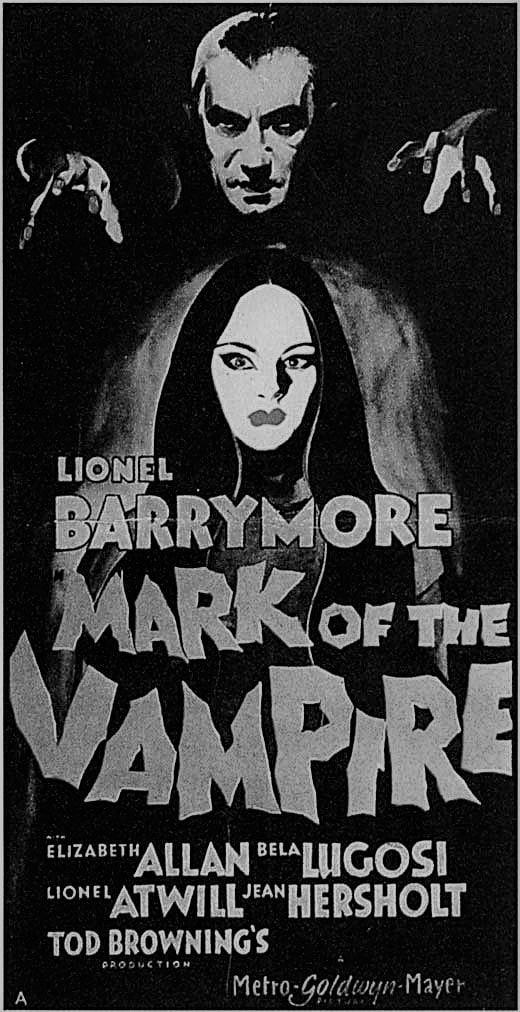 MARK OF THE VAMPIRE (1935)
MARK OF THE VAMPIRE (1935) (61 Min.) Genre: 1930 HORROR-SCIFI, Transfer Quality: A
Mark of the Vampire is Tod Browning's remake of his own 1927 thriller London After Midnight, which unfortunately no longer exists. The sudden appearance of ghostly vampires in a remote mittel-European community is seemingly tied in with an old, unsolved murder case. Police inspector Neumann (Lionel Atwill) and occult expert Prof. Zelen (Lionel Barrymore) investigate, with the full cooperation of leading citizen Baron Otto (Jean Hersholt). For awhile, it looks as though the vampires — Count Mora (Bela Lugosi) and his chalky-faced daughter Luna (Carroll Borland) — will continue to hold the community in thrall, but the truth behind their mysterious activities is revealed midway through the film, whereupon the story concentrates on identifying the well-concealed murderer. In the original London After Midnight, Lon Chaney played both Count Mora and Prof. Zelen, which should provide a clue as to the film's incredible outcome. — Hal Erickson
Starring: Lionel Barrymore, Bela Lugosi, Elizabeth Allan, Lionel Atwill | Directed by: Tod Browning
 MUMMY, THE (1932)
MUMMY, THE (1932) (74 Min.) Genre: 1930 HORROR-SCIFI, Transfer Quality: A
The Mummy represented Boris Karloff's second horror starring role after his "overnight" success in Frankenstein. Brought back to life after nearly 3,700 years, Egyptian high priest Imhotep wreaks havoc upon the members of the British field exposition that disturbed his tomb (shades of the King Tut curse). While disguised as a contemporary Egyptologist, he falls in love with Zita Johann, whom he recognizes as the latest incarnation of a priestess who died nearly 40 centures earlier. Spiriting Zita away to the tomb, he relates the story of how he had dared to enter her ancestor's sacred burial crypt, hoping to restore her to life. Caught in the act, he was embalmed alive and his tongue was cut out for his act of sacrilege. Now that he has returned, he intends to slay Zita, so that they will be reunited for all time in the Hereafter. Despite its melodramatic trappings, The Mummy is essentially a love story, poetically related by ace cinematographer and first-time director Karl Freund. Jack Pierce's justly celebrated makeup skills offers us two Karloffs: the wizened Egyptologist and the flaking, rotting mummy, who though only seen for a few seconds remains in the memory long after the film's final image has faded. Best line: "It went for a little walk." The Mummy was followed by four stock footage-laden sequels, none of which approached the power and poignancy of the original.
Starring: Boris Karloff, Zita Johann, David Manners, Edward Van Sloan, Arthur Byron | Directed by: Karl W. Freund
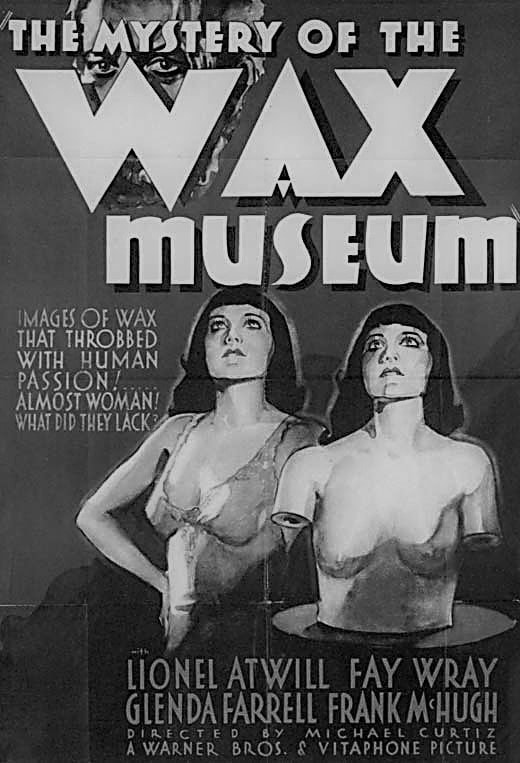 MYSTERY OF THE WAX MUSEUM, THE (1933)
MYSTERY OF THE WAX MUSEUM, THE (1933) (77 Min.) Genre: 1930 HORROR-SCIFI, Transfer Quality: A
Mystery of the Wax Museum begins in London in the 1920s. Lionel Atwill plays a brilliant sculptor who manages a wax museum. Regarding his historical creations as his friends, Atwill refuses the entreaties of his business-partner Edwin Maxwell to turn his labor-of-love museum into a more profitable "house of horror." Maxwell responds by setting fire to the museum, hoping to collect the insurance; as Atwill looks on in horror, his effigies of Marie Antoinette, Queen Victoria et. al. grotesquely melt to the floor. Flash-forward to 1933: New York City is plagued by several disappearances—not only of live people, but of recently deceased corpses from the morgue. Hard-boiled girl reporter Glenda Farrell browbeats her long-suffering editor Frank McHugh into investigating these disappearances. Farrell rooms with Fay Wray, the girl friend of Allen Vincent, who works as a technician at a new midtown wax museum. This about-to-open attraction is run by Atwill, who had survived the London fire but is now confined to a wheelchair. Atwill's old enemy Maxwell is also in New York, his fingers in several crooked pies. It appears to Farrell (and the audience) that somehow Maxwell is involved in the recent rash of disappearances; the guilty party could also be playboy Gavin Gordon, Farrell's boyfriend, who is deeply in debt to Maxwell. But once Atwill decides that Fay Wray is the living image of Marie Antoinette, the audience becomes uncomfortably suspicious that all those incredibly life-like statues in his museum are actually the paraffin-coated bodies of the missing people. Atwill tips his hand when a terrified Fay, promised "eternal life" by being "transformed" into an Antoinette effigy, begins punching and clawing at Atwill's face-revealing his countenance to be a mask, covering his hideously burned and gnarled features. Thus the stage is set for the climactic race to prevent the strapped-down Fay from being permanently encased in wax.
Starring: Lionel Atwill, Fay Wray, Glenda Farrell, Allen Vincent, Frank McHugh | Directed by: Michael Curtiz
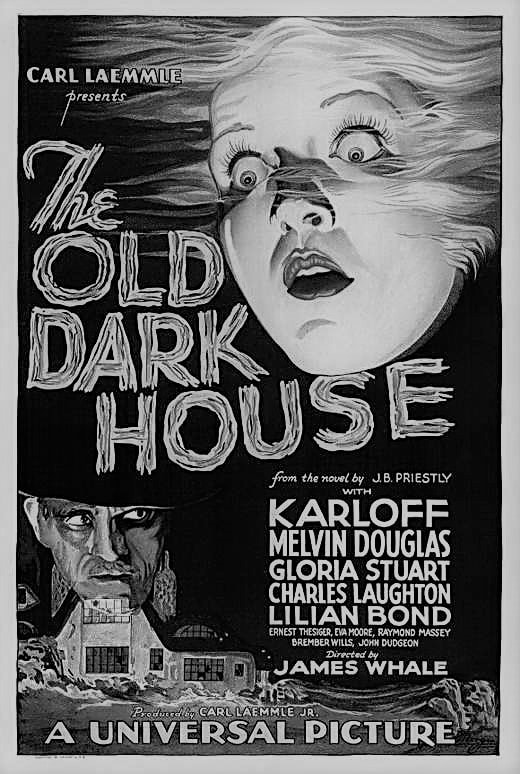 OLD DARK HOUSE, THE (1932)
OLD DARK HOUSE, THE (1932) (71 Min.) Genre: 1930 HORROR-SCIFI, Transfer Quality: A
It's a wildly varied group that takes shelter from a raging English storm in the forbidding mansion of the Femm family. Among the reluctant guests are stuffed-shirt Philip Waverton (Raymond Massey): Philip's sensitive wife Margaret (Gloria Stuart); their mutual friend, disillusioned war veteran Roger Penderell (Melvyn Douglas); vulgar self-made millionaire Sir William Porterhouse (Charles Laughton); and Porterhouse's no-better-than-she-ought-to-be lady friend Gladys DuCane (Lillian Bond). Under the baleful eyes of ungracious, atheistic host Horace Femm (Ernst Thesiger) and Horace's religious-zealot sister Rebecca (Eva Moore), the group sits around conversing, slowly coming to the realization that first impressions are most deceiving. Normally, that would be the whole story-except that the old dark house houses a deep dark secret involving 101-year-old Sir Roderick Femm (played by "John Dudgeon", actually an actress named Elspeth Dudgeon) and pyromaniac Saul Femm (Brember Wills). Lumbering ominously throughout the proceedings is top-billed Boris Karloff, playing Morgan, the mute, alcoholic family butler (the opening credits felt obligated to tell 1932 filmgoers that yes, this was the same Karloff who'd portrayed the Monster in the previous season's Frankenstein). Directed with sinister verve by James Whale and brimming with unforgettable dialogue ("No beds! They can't have beds!" "Have some gin—it's my only weakness," "That's fine stuff too, but it'll rot!" etc.), The Old Dark House is one of the most enjoyable and least formularized of the Universal "scare" pictures of the early 1930s. The film was based on J. B. Priestly's Benighted, though Priestly's hero dies in the book and does not in the film (this appears to have been a last-minute decision—and a wise one). Long thought lost, The Old Dark House was rediscovered in the early 1970s; copyright problems with the lukewarm 1963 remake kept it off television until 1994, at which time a sparkling new print was struck, replacing the washed-out dupes with which film buffs were all too familiar. — Hal Erickson
Starring: Boris Karloff, Melvyn Douglas, Charles Laughton, Gloria Stuart | Directed by: James Whale
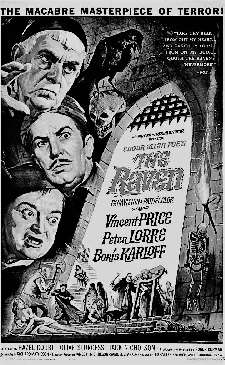 RAVEN, THE (1935)
RAVEN, THE (1935) (62 Min.) Genre: 1930 HORROR-SCIFI, Transfer Quality: A
Bela Lugosi and Boris Karloff team up in this excellent 1935 chiller. Lugosi is crazed brain-surgeon Dr. Richard Vollin who is infatuated with the characters and devices found in the Edgar Allan Poe stories. When a local judge brings his beautiful daughter for brain surgery, the doctor falls in love with her and is spurned by the judge when he asks for her hand in marriage. To extract revenge, Vollin invites the judge, his daughter, and her new fiance over for dinner. He intends to try out some of his gruesome Poe gadgets on them. Before he can, enter Boris Karloff, a prison escapee who wants Vollin to do some much-needed plastic surgery on his face. Vollin obliges, but instead of making him handsome, he deforms Karloff and subjects him to his will. Now the evil Vollin can get down to business... — All Movie Guide
Starring: Boris Karloff, Bela Lugosi, Irene Ware, Lester Matthews | Directed by: Louis Friedlander
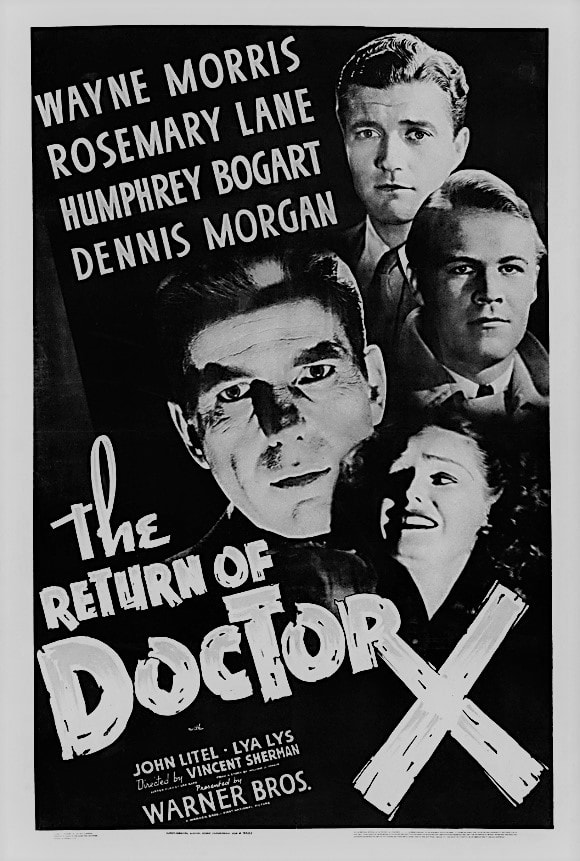 RETURN OF DOCTOR X, THE (1939)
RETURN OF DOCTOR X, THE (1939) (62 Min.) Genre: 1930 HORROR-SCIFI, Transfer Quality: A
Humphrey Bogart makes his first and last appearance in a horror movie in this film. Though the title implies that it is a sequel to the classic 1932 chiller Dr. X it is not. The terror begins when an eager-beaver reporter stumbles across the corpse of a popular actress who turns up, after much media hoopla, not to be dead at all. At least she seems to be alive on a surface level and is eager to sue the reporter's paper. The reporter can't help but notice that here skin is unnaturally pale and that she keeps her face concealed beneath a long-black veil. Suspecting that evil is afoot, he—who by now is unemployed—launches a private investigation to prove that she really was the corpse he saw. His search leads him into the terrifying world of a psycho blood doctor, and into a series of unsolved murders in which all the victims were found with no blood in their veins. Ultimately, the reporter finds himself face-to-face with the nefarious Dr. Maurice Xavier (Bogart), a man executed several years ago for murdering patients while performing Frankensteinian experiments. — Sandra Brennan
Starring: Humphrey Bogart, Rosemary Lane, Dennis Morgan, John Litel | Directed by: Vincent Sherman
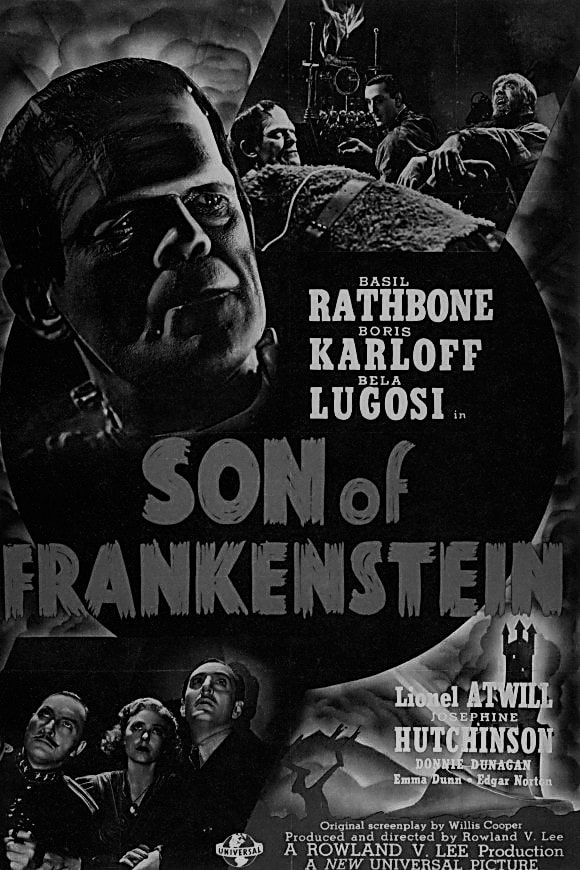 SON OF FRANKENSTEIN (1939)
SON OF FRANKENSTEIN (1939) (99 Min.) Genre: 1930 HORROR-SCIFI, Transfer Quality: A
The most elaborate—and longest—of Universal's Frankenstein series, Son of Frankenstein represents Boris Karloff's last appearance in the role of the Monster. The title character is played by Basil Rathbone, who with wife Josephine Hutchinson and son Donnie Donegan returns to the Old Country to take over his late father's estate. Rathbone receives a cool reception from the local villagers, who remember all too well the havoc wreaked by his father's monstrous creation. Though he assures his neighbors that he has no intention of following in his father's footsteps, Rathbone is hounded by suspicious town constable Lionel Atwill, whose stiff artificial arm is an unfortunate legacy of an earlier confrontation with Karloff. Also hanging around Frankenstein Castle is crazed shepherd Bela Lugosi), whose neck was broken in an unsuccessful hanging attempt. Lugosi wishes to exact revenge on the city fathers who'd tried to execute him, and to that end persuades Rathbone to revive the hideous Karloff. At first resistant, Rathbone becomes as obsessed as his father with the notion of creating artificial life. Now the fun begins, directed with Germanic intensity by Rowland V. Lee. Though Mel Brooks's Young Frankenstein has rendered Son of Frankenstein virtually impossible to take seriously, the film remains an excellent marriage of the slick, sanitized production values of the "New Universal" and the Gothic zeitgeist of the earlier Frankenstein epics. Best line: Lugosi, looking over the dormant body of The Monster, explains raspily that "He does...things...for me." Hans J. Salter's intense musical score for Son of Frankenstein would continue to resurface in Universal's Mummy B pictures of the 1940s. Watch for Ward Bond in a bit part as a police officer...and see if you can spot Dwight Frye, whose supporting part was excised from the final release print, among the villagers. — Hal Erickson
Starring: Basil Rathbone, Boris Karloff, Bela Lugosi, Lionel Atwill | Directed by: Rowland V. Lee
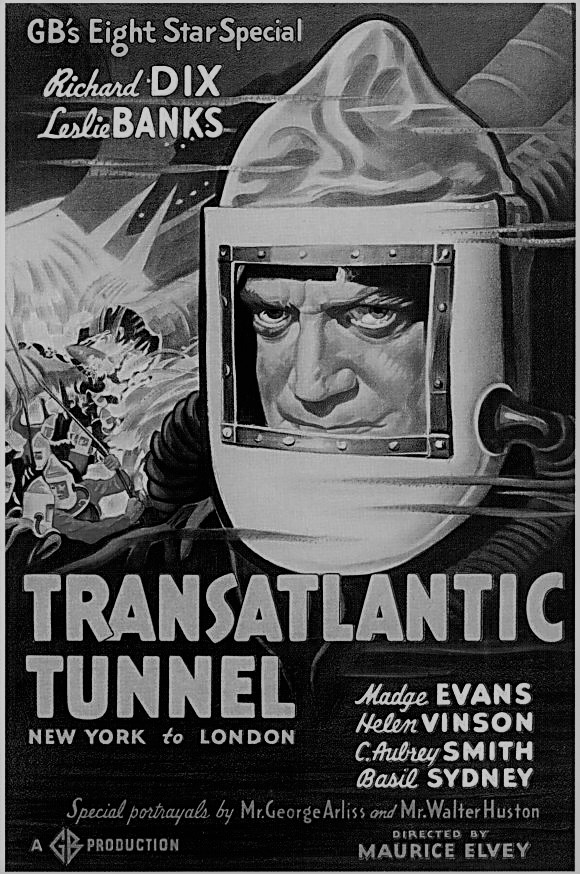 TRANSATLANTIC TUNNEL (1935)
TRANSATLANTIC TUNNEL (1935) (94 Min.) Genre: 1930 HORROR-SCIFI, Transfer Quality: B
Transatlantic Tunnel is the English-language version of the 1932 French-German speculative drama The Tunnel. Set sometime in the future (complete with two-way televisions, art-deco airships and self-propelled automobiles), the film stars Richard Dix as McAllen, a visionary architect who devotes his life to the construction of a tunnel linking the United States with England. Despite devastating professional and personal setbacks, including the death of his own son in a tunnel cave-in, nothing dissuades Dix from completing the project. Guest stars Walter Huston and George Arliss are cast respectively as the American President and the British Prime Minister, roles that they'd played before on several occasions. Like William Cameron Menzie's Things to Come, the film is more impressive for its futuristic sets and state-of-the-art special effects than for its dramatic content. Originally released at 94 minutes, Transatlantic Tunnel is currently available only in its 70-minute reissue form.
Starring: Richard Dix, Leslie Banks, Madge Evans, Helen Vinson | Directed by: Maurice Elvey
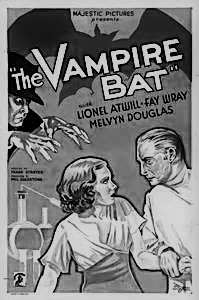 VAMPIRE BAT, THE (1932)
VAMPIRE BAT, THE (1932) (69 Min.) Genre: 1930 HORROR-SCIFI, Transfer Quality: A
Bloodsucking winged creatures who may take human shape appear to have returned after centuries of dormancy to the middle-European municipality of Kleinschloss in this atmospheric, low-budget thriller from small-scale Majestic Pictures, and the burgomaster (Lionel Belmore) demands answers. With victims scattered everywhere, all bearing the distinctive puncture marks, police detective Karl Brettschneider (Melvyn Douglas) finds himself completely stymied. Brettschneider, who refuses to accept what he considers mere superstition, is not pleased when that eminent physician Dr. Otto Von Niemann (Lionel Atwill) hints that there may indeed be such things as murderous human bats. Herman Gleib (Dwight Frye), the village idiot, meanwhile, just happens to have a fondness for the nocturnal creatures — "They're so soft!" — and the villagers, as they are wont to do, grab their torches and commence a manhunt. Poor Herman is destroyed, but there is another killing. And this time the victim is Georgiana (Stella Adams), Dr. Von Niemann's housekeeper, who failed to serve the physician his late-night coffee. — Hans J. Wollstein
Starring: Lionel Atwill, Fay Wray, Melvyn Douglas, Maude Eburne | Directed by: Frank Strayer
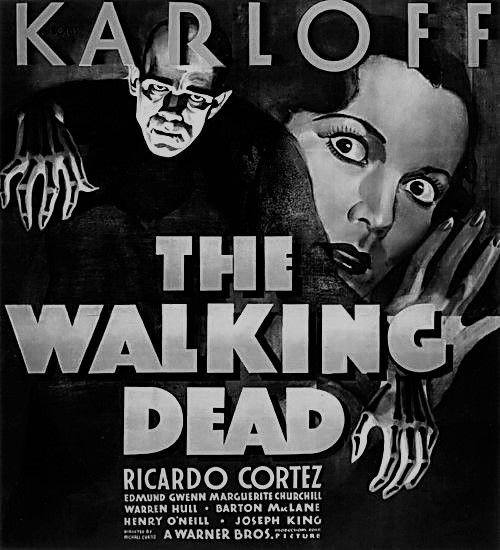 WALKING DEAD, THE (1936)
WALKING DEAD, THE (1936) (66 Min.) Genre: 1930 HORROR-SCIFI, Transfer Quality: A
In one of his most successful portrayals of a "living dead" man, Boris Karloff plays John Ellman, an ex-convict who is framed by the mob for the murder of the judge who first put him away. Evidence proving Ellman's innocence arrives seconds after he is electrocuted. Officials allow Dr. Evan Beaumont (Edmund Gwenn) to experiment with putting a mechanical heart into Ellman. The device revives the dead man, but he has become a white-haired, monster-faced zombie who hangs out in graveyards and seeks revenge on the conspirators who framed him. — Michael Betzold
Starring: Boris Karloff, Ricardo Cortez, Edmund Gwenn, Marguerite Churchill, Barton MacLane | Directed by: Michael Curtiz
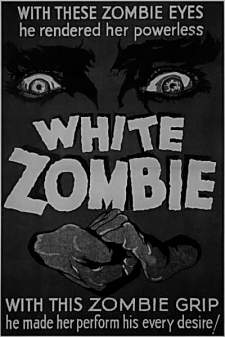 WHITE ZOMBIE (1932)
WHITE ZOMBIE (1932) (73 Min.) Genre: 1930 HORROR-SCIFI, Transfer Quality: A
In this haunting low-budgeter, Bela Lugosi stars as Murder Legendre, a shadowy character who exercises supernatural powers over the natives in his Haitian domain. Coveting Madge Bellamy as his bride, wealthy Robert Frazier enters into an unholy agreement with Lugosi, whereby Madge will die, then be resurrected as a zombie.
Starring: Bela Lugosi, Madge Bellamy, Joseph Cawthorn, John Harron, Brandon Hurst | Directed by: Victor Halperin

